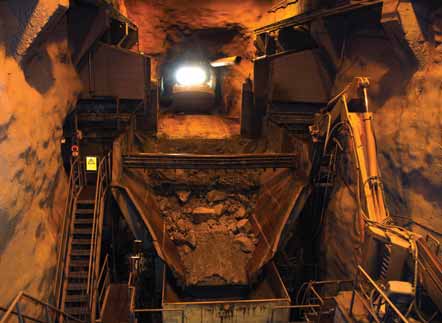
Sandvik’s AutoMine controls a Toro 0011 LHD through the dumping segment at Inmet’s
Pyhäsalmi mine’s underground crusher.
Partnership at Pyhäsalmi
Haulage is one key focus for partners Pyhäsalmi Mine Oy and Sandvik
By Kyran Casteel, European Editor

But one group that has maintained a flexible approach to the concept is Sandvik. The brochure Sandvik in Action, issued when Sandvik consolidated its multiple mining and construction product lines under a single brand, says the company sees partnership as a concept with many dimensions. Sandvik experts will always be available to discuss mining challenges and opportunities in a systematic way that, in the end, will lead to improved productivity and better profitability. Using the group’s wide product range and consolidated expertise and experience, these experts seek progressively to add value by finding improved solutions throughout a customer operation’s lifetime. If appropriate, this may be achieved through service contracts or by the customer paying by the meter drilled or ton produced, in either case making Sandvik responsible for achieving agreed goals.
To see partnership in practice, E&MJ visited Inmet Mining’s Pyhäsalmi mine in Finland with Kari Talvitie, Sandvik Mining & Construction’s country manager, UG Hard Rock Mining segment.
Innovation for Survival
Explaining the context of the partnership
with Sandvik, the operation’s
Managing Director, Teuvo Jurvansuu,
emphasized that survival has for some
time been and remains Pyhäsalmi’s
fundamental task.
The volcano-sedimentary base metal deposit was discovered in 1958. It has a sphalerite-rich zinc core, changing outward—as copper content increases— to become a copper–pyrite orebody. Outokumpu first developed an open-pit, with mining from 1962, and went underground five years later. Ramp access development started in the 1970s. The open-pit was worked out in 1975. The operation undertook sequential development of underground reserves and introduced significant technological advances in the following years, in both the mine and the process plant.
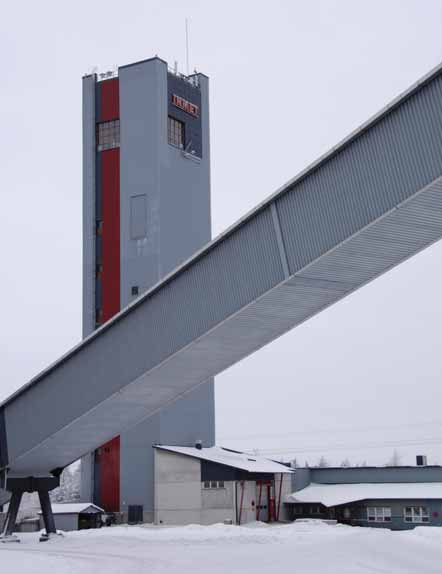
But these investments did not delay the exhaustion of reserves, at that time anticipated in 2000. In fact, by 1997–98, geology and mineral economics combined to threaten the run down of viable mineralization at Pyhäsalmi rather soon. But nature, ably assisted by Outokumpu geologists and miners, came to the rescue. In December 1996, the geologists had identified a new, deeper orebody that subsequently proved to contain up to 15 million mt ore, at average head grades of 2.5% zinc and 1.2% copper plus a substantial amount of recoverable pyrite. The mining team successfully undertook very rapid development of the New Mine during 1998–2001, sufficient to extend Pyhäsalmi’s life by up to 15 years. This included the sinking of thenew Timo shaft, to 1,440 m. Ironically, all this effort immediately preceded Outokumpu’s execution of an “exit mining” strategy. Outokumpu established Pyhäsalmi Mine Oy as the 100%-owned operating entity in 2001 and this was sold to Inmet Mining at the start of 2002. At the end of 2006, there were 210 employees and 45 contract personnel at the operation, proven reserves stood at 14.68 million mt grading 2.5% zinc and 1.2% copper, and mining was expected to continue until 2016.
Although Inmet Mining did not acquire as large a slice of the Outokumpu base metals cake as did Boliden, the Canadian firm did secure a relatively long term and productive asset. By the end of 2006, the internal rate of return since the acquisition was 52%. The company noted that the unique geometry of the orebody had allowed essentially all the critical mine development to be put in place at an early stage in the new mining section’s life cycle, which would allow the operation to keep capital expenditure on infrastructure at an unusually low level. Of course, mobile and some process equipment units do have to be replaced, such that Pyhäsalmi spent €3.3 million in 2005 on mill improvements and sustaining mine capital and €3.9 million in 2006 on mill improvements, mobile equipment replacements and sustaining capital. During 2007, €7 million is to be spent on developing a replacement ore pass, replacing mobile equipment and copper flotation cells, and other sustaining capital. What remains a strategic necessity is constant attention to performance and to maintaining or improving the operation’s position on the global cost curve.
The main significant change in practice at the mine resulting from Inmet taking over has been the introduction of Canadian safety protocols, Jurvansuu commented. The company views good working conditions as of equal importance to productivity rates. Current problems include the limited availability of skilled workers in Finland, which Pyhäsalmi has been trying to counter by multi-skilling the workforce. For example, operators have “ownership” of their machines and are responsible for washing the unit and doing pre-maintenance inspections. They also provide input regarding any problems during maintenance work and learn about the maintenance required on the machine while it is being done.
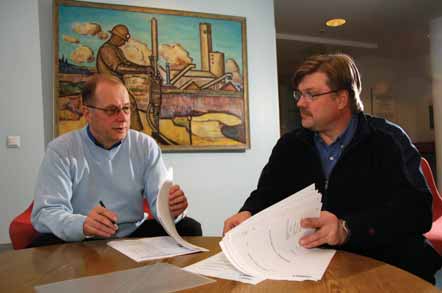
The “Retka” canteen and offices for shift bosses, maintenance supervisors, and mine surveyor, as well as a spare room for mine geologists when they work underground, are located on the 1,410- m level. So are the mobile equipment maintenance workshops and not forgetting the deepest subterranean sauna in the world. The main control room is located in the concentrator and workshops for maintaining stationary and general mine site equipment are also located at surface. Some 40 to 50 people work underground on each shift—20 to 25 miners and 10 mining department maintenance people with the balance being maintenance department staff.
Pulkkinen explained that the mining methods used are a variant of sub-level stoping and also benching, working multiple stopes on several levels at the same time. The main drifts are outside the orebody and the stope accesses and stopes are driven in the orebody. Supporting the ore/waste boundary by extensive cable bolting has enabled the mine to achieve an estimated ore dilution of only 4%. All development is supported by bolting and by 5-cm shotcrete applied with a Normet Spraymec. A two-boom Sandvik Axera 07 jumbo is the main drifting rig, backed up by a Para 3-boom machine.
The stopes are 15 m to 25 m wide and 50 m or 25 m high, yielding 50,000 to 100,000 mt per stope and annual ore production capacity is 1.3 million to 1.4 million mt. Production blasting involves fans of 76-mm holes 3 m apart, which are drilled by two Sandvik DataSolo 07 rigs that were bought in 2000 and 2002, and are currently used with Robit tools. About 97% of holes are down holes but up holes are used when working close to the edge of the orebody. Ore pillars are mined out after all stopes have been filled with waste rock from development plus rockfill from a quarry at surface. Pyhäsalmi recently changed from unconsolidated backfilling of secondary stopes to backfill consolidated with smelter slag ground on site in order to provide more flexibility in mine planning. The computer-controlled ventilation system blows air in from the surface via raises and ducting; both air flow and gas content are monitored and displayed on screens in the underground canteen, control room and mine offices. Heat from pumped water is used on site to warm up the ventilation air, supplemented when necessary by heat from the Pyhäsalmi community’s district heating system. The mine pumps 800,000 m3/y of water but the deep ore zone is very dry.
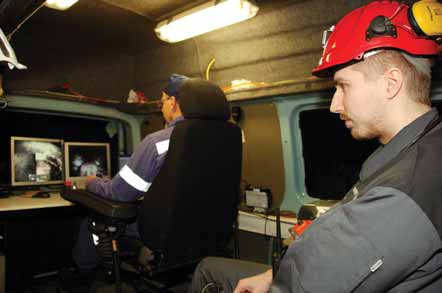
Installation of the New Mine crusher significantly reduced Pyhäsalmi’s CO2 emissions because the need to haul ore from the 1,000-m level to the crusher at the 640 level, using seven Toro 40 trucks, was eliminated, Pulkkinen explained. But reducing adverse environmental impacts remains a company core strategy: within the concentrator, for example, the pyrite concentrate drum dryer was replaced by a pressure filter, eliminating a significant source of particulates and the only site source of SO2 emissions.
Three Joint Projects
Reporting developments at Pyhäsalmi,
Inmet commented that “modern technology
and automation have always
been an important part of this operation
so it can maintain its competitiveness.
These efforts will continue.” To this
end, Pyhäsalmi Mine Oy has strengthened
the relationship with Sandvik to a
partnership, as well as maintaining its
links with nearby Normet and, on the
processing side, with Outotec.
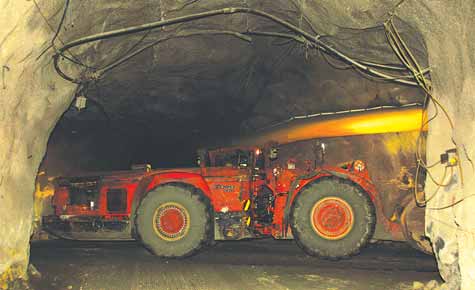
The loading and automation project started with the introduction of the AutoMate system. Pyhäsalmi first tested the technology (See AutoMine section, pp. 51-52) for LHD operation at the mine in 2003. The company perceived the benefits to be better working conditions for operators, greater safety than when using near-machine remote control units, and better ore recovery from the stopes so that the per shift capacity of the LHDs would be higher than with radio remote control (though not as high as with full manual operation).
Sandvik designed a system specified to meet the mine’s particular requirements and commissioning, with one Sandvik Toro 0011 automated LHD, was completed in January 2005. The implementation is a good illustration of the system’s flexibility in application: to enable the system to be used on different stoping levels and routes, Sandvik packaged the operator’s control equipment into a van and provided movable access control gates to maintain personnel safety in the area where the unmanned LHD is operating.
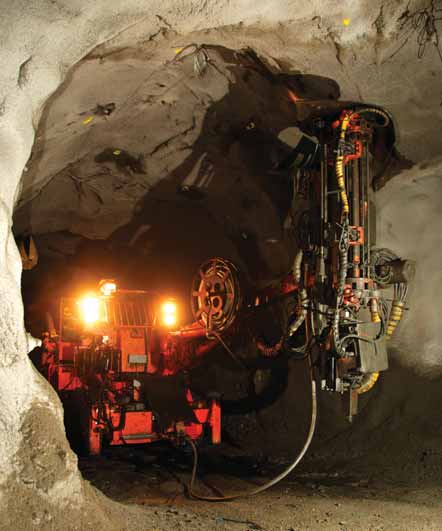
The mine has 12 active levels at all times and typically loads out 13 to 17 stopes per year. In 2006, 13 stopes yielded 1.4 million mt ore, marginally above plan but at lower grades (1% copper, 2.8% zinc) than in the previous year due to a change in the stoping plan that deferred mining some high-grade zinc stopes until 2007. At any one time there will be two or three stopes in production, one being loaded out, one in development and two or three being backfilled. Each one lasts about six months. It is quite easy to move the system from one level to another, said Pulkkinen, depending on the readiness of the infrastructure on the “new” level. There are two AutoMine-enabled Sandvik production LHDs plus one older Toro machine used for cleaning that may be replaced. The mine’s AutoMine Specialist, Marko Paananen, checks and finetunes routing and performance as well as collaborating with Sandvik on maintenance etc. AutoMine is now achieving 80% of the efficiency of manual LHD operations and reliability has also increased. Base station and network reliability is the main focus for improvement at the moment. “It’s a work in progress,” said Pulkkinen.
The bolting project is in effect a continuation of the previous collaboration between Pyhäsalmi and Tamrock then Sandvik on the design of cable bolting patterns and the related equipment issues. Recent work has concerned the development of a new cable bolting rig, which the mine ordered on February 14, 2007, together with a new version of Sandvik’s Robolt roof bolting rig. This will have two booms, one for drilling the holes and inserting the bolts, the other for handling screen mesh. The present cable bolter, in use since 2000, will be modified for special drilling jobs.
Within the remote controlled longhole drilling project Sandvik has installed a WLAN communications system on one of the DataSolo rigs, which is now operated by remote control. This same technology will be used on the new cable bolter, for instance, for wireless data collection and drill hole pattern transfer, said Kari Talvitie.
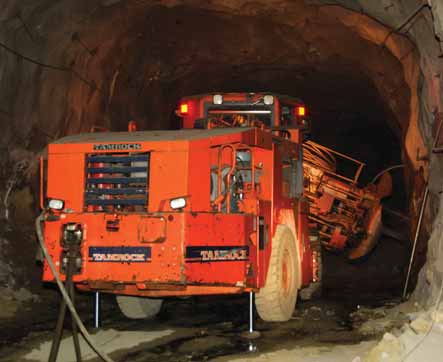
Discussing aspects of the partnership, Pulkkinen and Talvitie mentioned one point that, while rather obvious, should not be overlooked in today’s globalized world: a mother tongue customer– supplier dialog optimizes communication through linguistic subtleties.
Looking Forward
Inmet Mining’s Vice President–Mining,
Scott Herr, commented: “The experience
and skill of the mine workforce support
the implementation of highly automated
systems at the Pyhäsalmi mine. This is
assisted by the mine’s close proximity to
the Tampere facility allowing the close
cooperation that is needed in the development
and integration of new technology
such as the AutoMine loader. The
staff and employees of the mine make
the most of this opportunity to enhance
productivity, communication, and safe
operation with the application of technology.
The AutoMine system allows us
to safely muck large stopes without the
exposure to personnel that is typically
associated with standard remote-control
operations.”
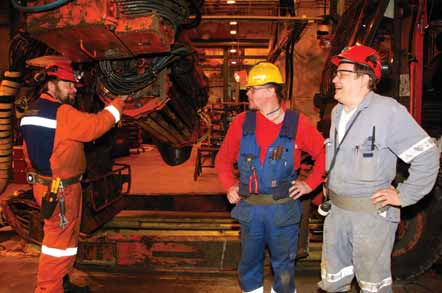
Equally understandably the group remains committed to deep and strong relationships with customers, intended to help achieve and improve on targeted productivity and performance over the long term. Recently, Sandvik signed a unique collaboration with Lonmin and a strategic intent with Anglo Platinum, both in South Africa. Well, if the Pyhäsalmi experience is anything to go by, partnership does seem to work, doesn’t it?
| AutoMine: A Technology in Progress In a “real life” operating mine, automation is defined as a computerized tool that is used to improve mine performance, so providing significant benefits for the entire mining process. AutoMine is doing just that at four mines around the world, with more installations to follow, explains Sandvik’s Tiina Heinio. 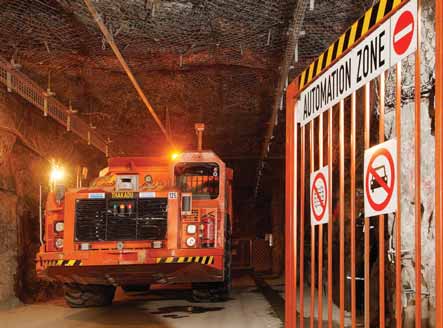 AutoMine is a flexible modular system that can successfully be adapted to small scale operations, as well as massive block caving applications. AutoMine is an automated loading and hauling system for underground hard rock mining suitable for use with both LHDs and trucks. The system is modular, can be adapted to specific customer requirements, as at Pyhäsalmi, and can be applied in mines using methods ranging from small scale stoping through to massive block caving. Flexibility is further enhanced by the incorporation of functions and applications that allow AutoMine to interface with other third party IT systems at the mine site. This degree of automation promises several benefits, mainly increased fleet utilization, improved working conditions and safety, increased production, reduced maintenance costs, as well as optimized tramming speeds and smoother equipment operation. The standard AutoMine system is designed to be run from the comfort and safety of an air-conditioned control room on surface, where former machine operators can simultaneously monitor the movements of a fleet of driverless loaders or trucks hundreds of meters below the surface. Sandvik loaders or trucks navigate their way between the load and discharge points under the control of a supervisory system which is managing the traffic and monitoring the machines. Each route is divided into segments. These may comprise a single “mission,” within which the vehicles run at a specific speed, or more than one. Creating a maximum of segments where the vehicle can tram at high speeds improves the overall cycle speed. Initially, the vehicle has a basic record of the route for each mission. Then, using an on-board laser scanner, it records the topographic intricacies on each route and transmits this information to the supervisory system. The system can optimize the route accordingly. The system also includes a number of intelligent functions: for example, if one of the machines strikes a large rock in the roadway, the system will place a restriction on the speed in that area to ensure that machines following behind either slow down or stop at the obstacle, thereby reducing potential damage to the equipment. However, to integrate the AutoMine system fully with the overall mining system, the machines need to operate in exclusion zones, with personnel and machine entry strictly controlled by the Access Control System. Because AutoMine can operate through shift changes, productivity is increased as well as fleet utilization, while workforce time is optimized. The automated system also provides “realtime” information to assist with the mine’s planning processes by measuring, controlling and reducing bottleneck areas, in addition providing supervisors and management on surface with a complete “window” into the mining operation. AutoMine in Action 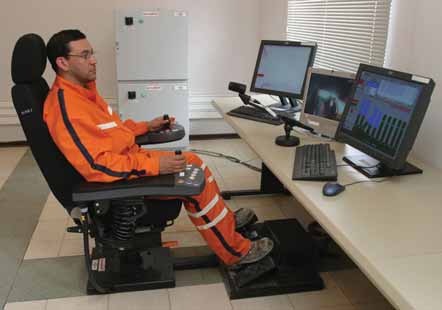 “Safety contribution has been substantial. The AutoMine system should adapt to the dynamic growth of the production area from safety point of view,” explained Martín Pierola, head of Pipa Norte mine. Due to a higher level of technology, an increased number of skilled maintenance personnel are required. This cost is offset by a reduction in spare parts consumption, and longer tire life. “The positive effects of the AutoMine system on people and fleet utilization are substantial, in terms of safety and the better quality of life for operators, as well as greater productivity and continuity, and improved equipment exploitation. Multi-function has been developed in each one of the operators, allowing the operation optimization,” said Oscar Salinas, AutoMine system operator. Codelco is continuing to expand areas where the AutoMine system is applied. The De Beers Finsch mine in the Northern Cape, South Africa, has been a trailblazer in the introduction of modern communications technology to improve the management of underground mobile equipment. Mike Brown, presently working at the company headquarters but previously operations manager at Finsch, believes that the introduction of automated trucks at the mine’s Block 4 project is a world’s first in underground mining. Sandvik trucks operate in a dedicated high-speed tramming loop on 63 level where manually operated LHDs load from draw points in the block cave and tip directly into the trucks at one of five tipping points. Brown commented that the primary objective in undertaking the installation was to reduce capital equipment costs and increase efficiency and productivity in underground operations. “The system was not designed as a labor-saving exercise. The advantage of automation is that you achieve increased efficiencies. We also believe that maintenance costs on our trucks will be lower because they are controlled by a computer, eliminating human error and bad driving habits. Another major advantage is that there is no driver fatigue. The introduction of automated trucking in the new Block 4 section of the mine was the first step toward automating the entire ore transportation system. Automation of the LHD operation is underway, with one unit having recently started work. Eventually eight automated LHDs may operate in the main production area. Meanwhile, Automine development continues at Sandvik’s Tampere manufacturing and R&D center in Finland. |